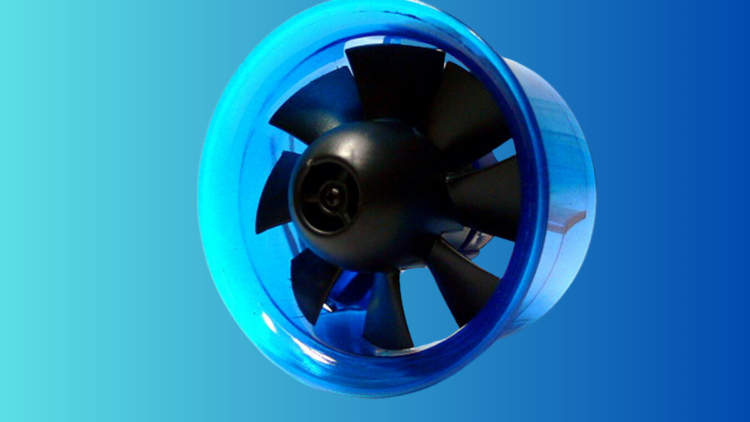
Unmanned Aerial Vehicles (UAVs) are transforming industries, from environmental monitoring to precision agriculture. As these drones become increasingly integrated into our daily lives, the need for quieter, safer, and more efficient propulsion systems has never been greater. That’s where our project, the Electric Ducted Fan (EDF) for Small UAVs, comes in.
This innovative propulsion technology offers a significant leap in efficiency while addressing the challenges of noise, weight, and safety that limit the performance of traditional drone propellers.
What is an Electric Ducted Fan (EDF)?
An EDF is a propulsion system that uses an electric motor to drive a multi-bladed fan housed within a cylindrical duct. Unlike open propellers, the EDF pulls air into the duct and accelerates it, producing both lift and thrust with minimal turbulence. This enclosed structure improves aerodynamic efficiency and ensures safer operation by reducing the risk of blade strikes.
The primary aim of this project was to develop a compact, high-performance EDF optimized for small UAVs used in applications such as surveillance, environmental monitoring, and agriculture.
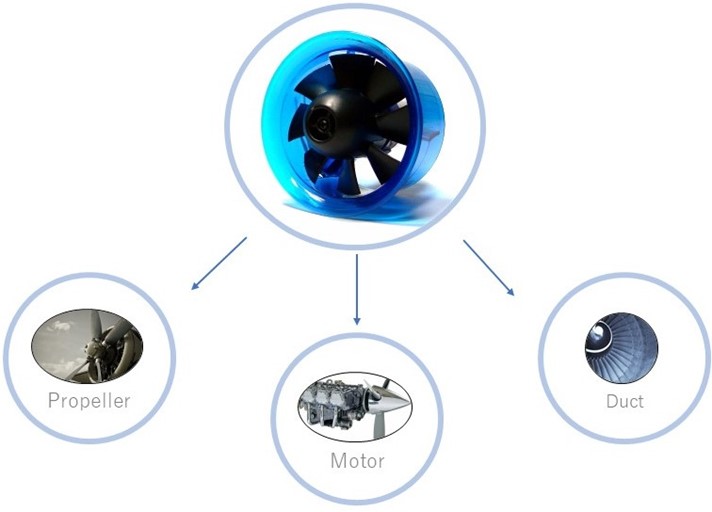
Why EDFs Over Traditional Propellers?
Our research showed that EDFs offer several advantages over conventional propulsion systems:
- Efficiency: EDFs have a higher thrust-to-weight ratio, extending flight time and range.
- Quiet Operation: With reduced blade noise, these systems are ideal for tasks in noise-sensitive areas, like wildlife monitoring.
- Safety: The enclosed fan design minimizes the risk of accidents and injuries.
- Ease of Maintenance: Electric motors simplify servicing, unlike internal combustion engines (ICEs) that require frequent upkeep.

The Design Journey
Developing an efficient EDF requires balancing multiple factors, including thrust generation, material selection, and aerodynamics. Here’s how we tackled these challenges:
- Blade Design: Using advanced Computational Fluid Dynamics (CFD) simulations, we optimized the shape and angle of the fan blades to achieve maximum thrust.
- Material Selection: To reduce weight and enhance durability, we 3D-printed the fan and duct using ABS plastic. ABS was chosen for its strength and flexibility, ensuring the blades withstand the stresses of high-speed rotation.
- Motor and Battery: We selected a brushless DC motor for its high efficiency and reliability, powered by lightweight LiPo batteries for extended operation.
- Duct Optimization: The duct’s shape was fine-tuned to reduce drag and improve airflow, increasing overall thrust by 24% during testing.
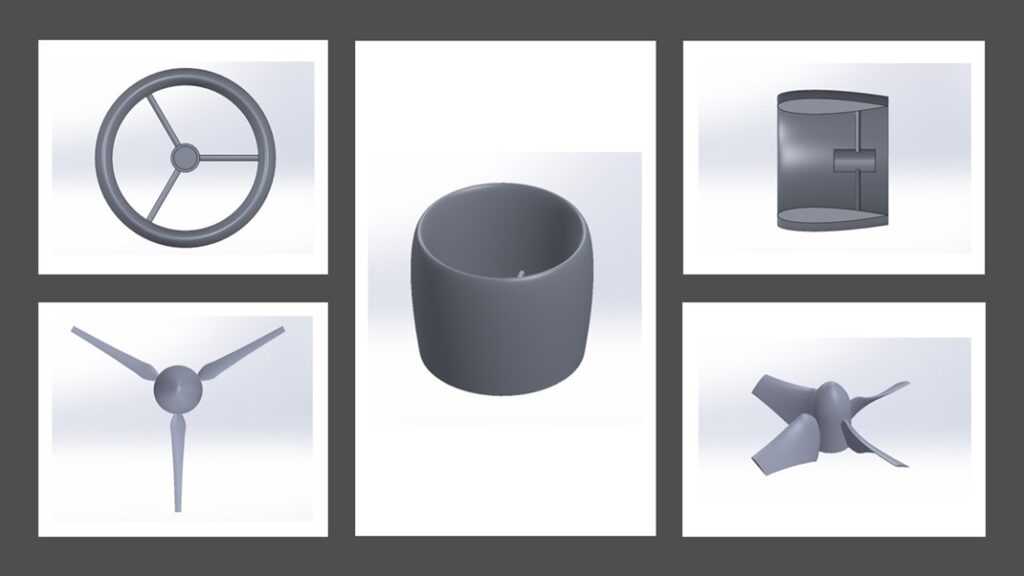
Testing and Results
Our EDF prototype underwent extensive testing on a custom-built test bench to validate its performance. Analytical models predicted a thrust force of 30.1 N, while real-world testing recorded 26.9 N, well within the acceptable error range for CFD simulations. In comparative tests, the ducted fan outperformed open propellers, delivering more thrust with less noise. When the fan was enclosed in the duct, thrust increased by 24%, demonstrating the effectiveness of our design.
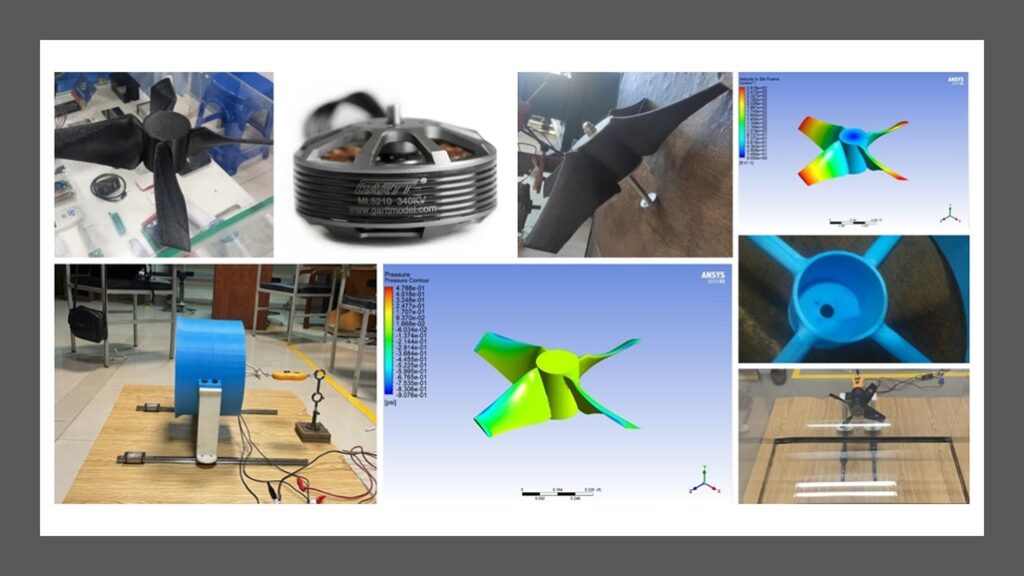
Application of EDF-Powered UAVs
The versatility of EDF technology makes it ideal for a variety of UAV applications:
- Surveillance and Reconnaissance: Silent UAVs equipped with cameras can operate discreetly for border patrol and law enforcement
- Precision Agriculture: UAVs fitted with EDFs can monitor crops, map fields, and spray fertilizers
- Search and Rescue: EDF-powered drones with thermal cameras can assist in locating missing people in challenging environments
- Aerial Photography and Film: Stable and quiet EDF drones are perfect for capturing high-quality aerial footage
- Infrastructure Inspection: UAVs can efficiently inspect power lines, pipelines, and bridges, reducing the need for manual inspections
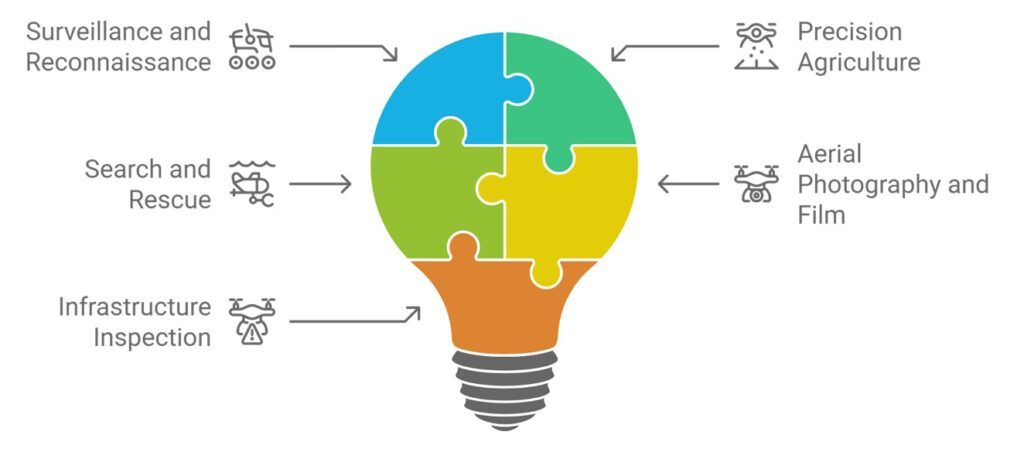
Future Directions and Improvements
While our EDF design met the project’s objectives, there is still room for further optimization. For future iterations, we plan to:
- Explore Advanced Materials: Incorporating carbon fiber could further reduce weight and improve performance
- Refine Duct Geometry: Small changes to the duct’s inlet and exit angles could increase thrust by an additional 10-15%
- Enhance 3D Printing Techniques: Alternative materials like PETG could offer better strength-to-weight ratios
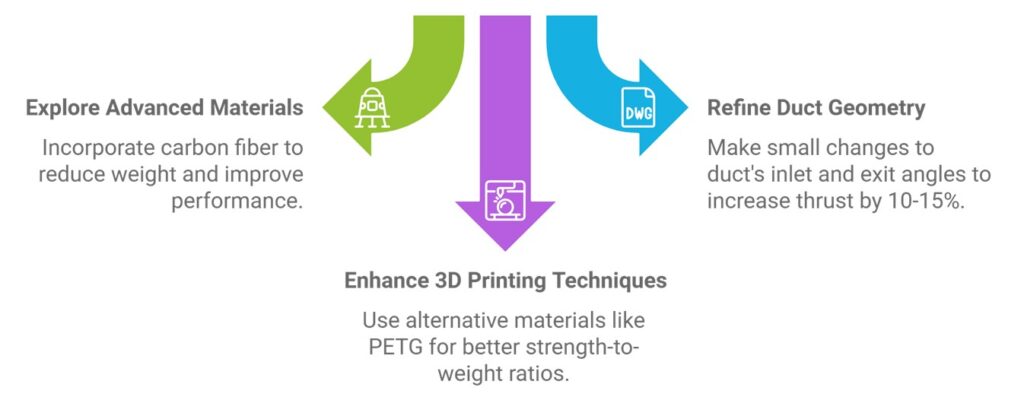
Conclusion
The successful development of our EDF demonstrates the potential of electric propulsion systems for small UAVs. This project has paved the way for more efficient, quieter, and safer drone operations, opening new possibilities in fields like agriculture, surveillance, and environmental monitoring.
As the demand for high-performance UAVs continues to grow, EDF technology will play a crucial role in shaping the future of drone applications, offering innovative solutions that bridge the gap between engineering excellence and real-world needs.
The author is a Tenured Professor at School of Mechanical and Manufacturing Engineering (SMME), National University of Sciences and Technology (NUST). He can be reached at emaduddin@smme.nust.edu.pk.
Research Profile: https://bit.ly/3NxK0Ue

![]()

